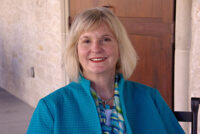On Wednesday, November 1, the county’s Climate Action and Resiliency Division held a Virtual Town Hall that I hosted along with Supervisor Lynda Hopkins, with whom I sit on the Board of Supervisors’ Climate Ad Hoc. When I was last Chair of the Board of Supervisors in 2020, I planned to orient the year’s agenda around the urgency of climate change.
As you might recall, the COVID-19 pandemic quickly (and understandably) redirected the county’s priorities that year. I am grateful that my role on the Ad Hoc has allowed me to continue lifting up climate change as an urgent focus for the county, and the town hall was a great showcase for what the county and our partners have accomplished, what we’re working on, and what comes next.
Climate Action and Resiliency is one of the five pillars in the county’s Five-Year Strategic Plan established in 2021, which is also the year we last hosted a Climate Town Hall. At that time, spring 2021, we did not even yet have staff in the Climate Action and Resiliency Division (CARD)! Needless to say, a lot has happened since then, not the least of which is the growth of the county CARD office.
Several important planning documents have been developed and adopted, including the Regional Climate Protection Authority’s (RCPA) Sonoma Climate Mobilization Strategy and the Climate Resilient Land Strategy from the county CARD and Ag + Open Space District, as well as current active and/or recent county initiatives including a zero waste audit and characterization study, municipal greenhouse gas emissions audit, carbon stock inventory, and a potential sequestration study.
The town hall also served to highlight in particular the county’s Climate Resilience Master Action Plan, which is currently being drafted with the goal of a carbon neutral, zero waste, and resilient county by 2030.
At the town hall, the first two panels featured regional leaders and county staff representing the aforementioned CARD, RCPA, and the Bay Area Regional Energy Network (BayREN). Our speakers emphasized the importance of coordinating regionally and across jurisdictions, highlighting the many opportunities for work in sectors including wildland stewardship, regenerative agriculture, reforestation, carbon sequestration, electrification, workforce development, and more.
Our speakers also noted the ways in which climate change is interconnected with the other challenges and inequities facing our county: lack of affordable housing, aging infrastructure, limited options for and the high cost of transportation – the list could go on.
I had the privilege of facilitating the third panel of the evening, which was comprised of representatives from Fire Safe Sonoma, Sonoma Ecology Center, the Building Decarbonization Coalition, Gold Ridge RCD, and the Sonoma County Bicycle Coalition. All of these organizations do amazing work in our community, from wildfire risk reduction education, to outreach to the Latino community, to education and advocacy for safe cycling and safe driving, and more.
The panelists reflected on their work in relation to climate change and shared their thoughts on how the county can be a good partner to their on-the-ground efforts to combat climate change. I am so thankful for all they do!
After the town hall, you may be thinking, what’s next? CARD staff came to the Board of Supervisors on Tuesday, November 7th to present the on the Carbon Inventory and Potential Sequestration Study, and will be returning to the Board of Supervisors again on December 11th for a workshop on the draft Climate Resilience Master Action Plan. In the meantime, I hope you will take the time to fill out the survey below to share your input on the draft plan.
Survey (English): https://survey123.arcgis.com/share/93911db5edc04a55a5846caa6d98f9e5
Survey (Spanish): https://survey123.arcgis.com/share/ebc199b5dfe749d6beeff4d9aacf37a5
RCPA Climate Mobilization Strategy: https://rcpa.ca.gov/what-we-do/sonoma-climate-mobilization/
11/7/23 Board of Supervisors Meeting Materials – Carbon Inventory and Potential Sequestration Study: https://sonoma-county.legistar.com/LegislationDetail.aspx?ID=6399747&GUID=42EF9CFA-1B23-4B80-BE5C-6DC2B882A484&Options=&Search=
_______________________________________
On October 19th, I attended the presentation of Sonoma County’s Fall Economic Perspective for 2023. For those who don’t know, the Fall Economic Perspective is prepared annually in partnership with the county’s Economic Development Board to gather insight on the health of the Sonoma County economy, and is presented at Sonoma State University.
This year’s keynote speaker, Dr. William Rodgers III from the Institute for Economic Equity at the Federal Reserve Bank of St. Louis, highlighted the struggles of households in our community, and disproportionately in our Black and Latino households, to meet their basic needs. Dr. Rodgers used a term he developed, ALICE, which stands for “Asset Limited Income Constrained & Employed,” to describe this population that includes teachers, nurses, firefighters, hospitality workers, and more. These households are all essential to making our county run, and are struggling to afford rent, to buy groceries, to pay hospital bills, to fill up their car with gas. When these households suffer, or as Dr. Rodgers said, when ALICE suffers, our entire county suffers.
Reflecting on this year’s economic perspective, I couldn’t help but think about all our Sonoma Valley residents struggling with these same basic needs. This holiday season, if you are in the position to make charitable contributions, I hope you will consider our needy families in the Sonoma Valley and the organizations that support them – I know I will be.



Be First to Comment